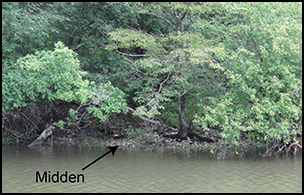Article contents
Kayak surveys in estuarine environments: addressing sea-level rise and climate change
Published online by Cambridge University Press: 12 August 2019
Abstract

Coastal archaeology is vulnerable to climate change, making the development of new techniques for the rapid recovery of information from the most threatened sites essential. The authors report a systematic kayak survey of a Chesapeake Bay sub-estuary undertaken during the winter months, when low tides and reduced vegetation maximise the visibility of archaeological material. Locations in the vulnerable intertidal zone were targeted for survey. Data were collected for 24 archaeological sites, illuminating local settlement chronology. This technique could be used for the survey of endangered coastal archaeology in other regions of the world.
- Type
- Method
- Information
- Copyright
- Copyright © Antiquity Publications Ltd, 2019
References
- 4
- Cited by




